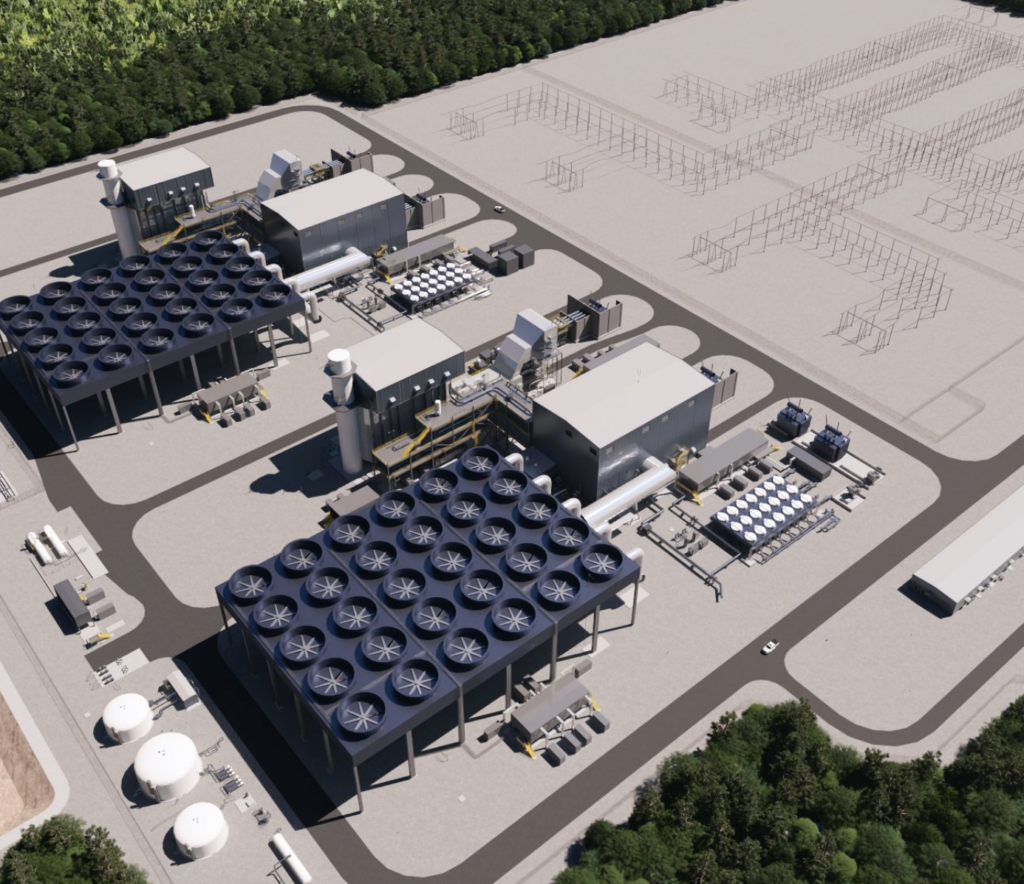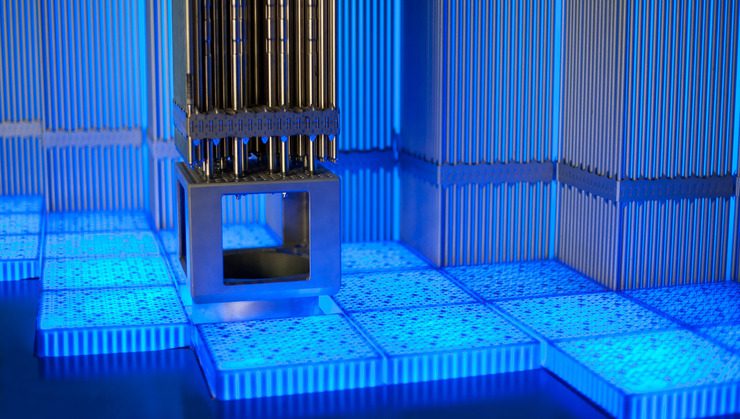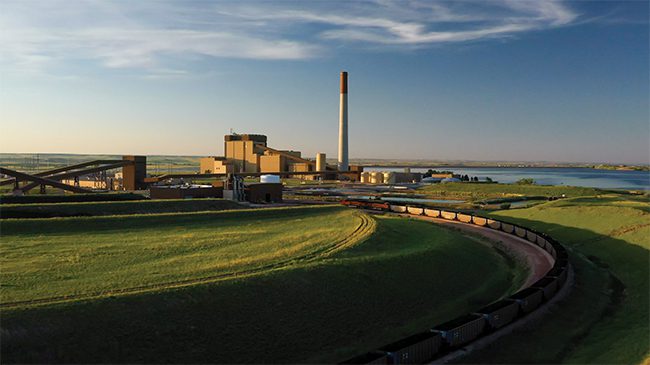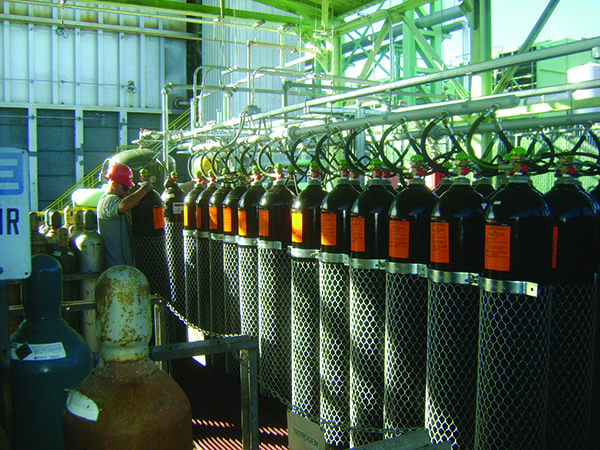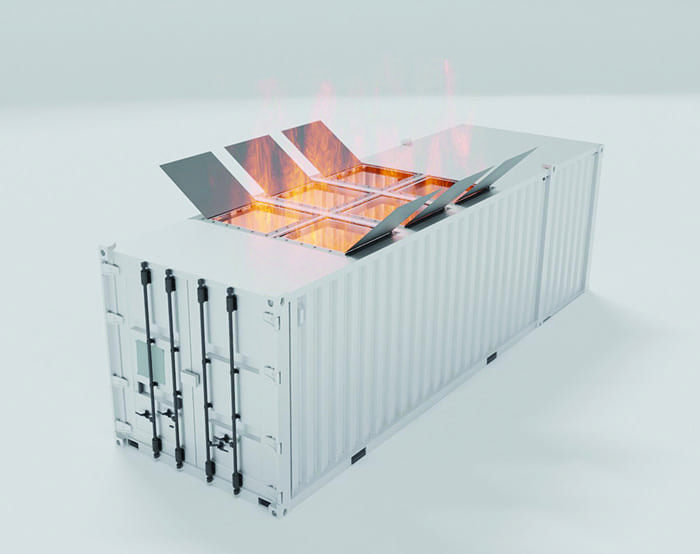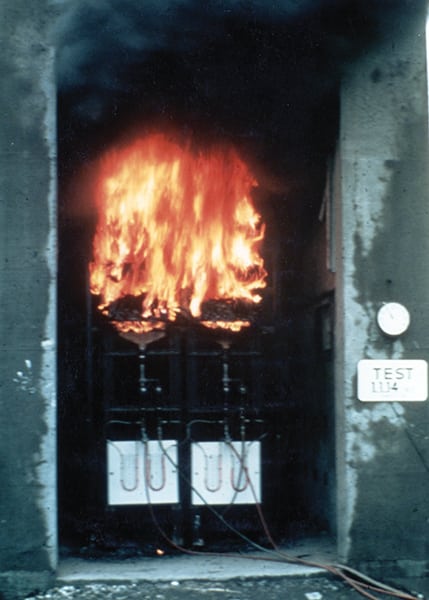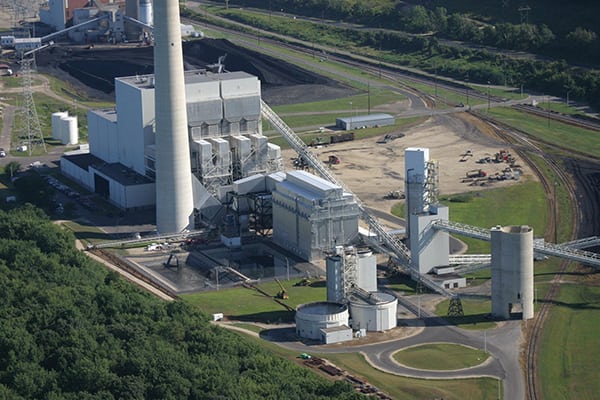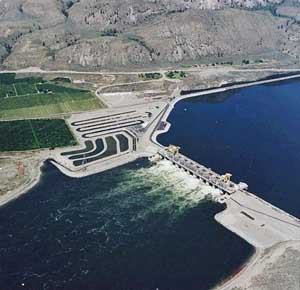A hybrid fire protection system has the ability to discharge a cloud of hybrid media into protected spaces to extinguish fires without the use of dangerous chemicals. The hybrid cloud is based on cyclonic distribution of both nitrogen and tiny water particles, introducing a better solution for fire suppression in power generation facilities.
Since 1882, when the world’s first coal-fired power station was erected and POWER magazine was founded, people have been protecting their plants with CO2, foam, and other types of fire suppression systems. The best way to avoid fire-related incidents is to remove the hazards that can cause them. While this is highly unrealistic, taking an uncommon but increasingly popular approach to fire safety threats allows facilities to develop ways to minimize the likelihood of ignition. While individual companies examine their facilities, and invest in improving safety culture, organizations like the National Fire Protection Association (NFPA) are devoted to eliminating death, injury, property, and economic loss due to fire, electrical, and related hazards.
Following guidelines and protocols improves safety, but unfortunately, even when many potential sources of fire are eliminated and safety guidelines are followed, it is possible for threats to remain. This is particularly true in power plants, which by design are vulnerable to fire hazards. Throughout these facilities, many processes integral to power generation make use of lube oil, natural gas, and combustible materials, all of which can become fuel if a fire breaks out.
Most turbine and generator fires are caused by lube oil combustion, as gaseous emissions from compressors can leak and cause explosions. Flammable substances coursing through the veins of cooling tower structures can be ignited by outside sources, such as incinerators and smokestacks. The smallest of sparks has the potential for a cumulative effect that could lead to significant structural or equipment damage or worse—worker fatalities.
This paints a sobering picture. Removing every potential threat is unachievable even in the most controlled environments; so, plant owners must be realistic and evaluate the best fire suppression systems for the workers and assets they are trying to protect.
Traditional Solutions
To date, plant owners have had to examine fire safety systems and choose from among them, knowing that the final decision would require tradeoffs and would bring with it limitations. For years, one of the most common choices for power-generation facilities has been a CO2 system. Historically, these systems have been the cause of worker fatalities since, by nature, they pose a health hazard because they rob the environment of oxygen. Anyone who is in an area in which a CO2 system is activated could be asphyxiated.
As an alternative to CO2, halon—a volatile organic compound similar to chlorofluorocarbons—has been used. The difference between CO 2 and halogens is that halogens generally are not fatal. They can, however, cause difficulty breathing, and skin and eye irritation, with extensive exposure leading to unconsciousness. In addition to the negative effects they have on people, halogens are harmful to the environment because of their long lifetime in the atmosphere. Some enter the stratosphere where they have caused ozone-layer damage, which is the primary driver for the phase-out of halogens. Halocarbon-based agents, although less damaging to the stratosphere, exhibit their own challenges when used within these environments.
Fire protection systems using halon- and halocarbon-based agents have inorganic chemical compositions in the form of gas, which in turn form hydrogen fluoride (HF) when exposed to heat, such as from the fire that the agent is being used to extinguish. The thermal decomposition byproduct—HF—may cause corrosion damage to electronic components. The degree of corrosion damage is dependent on HF concentration, exposure time, temperature, and relative humidity in the enclosure, and the properties of the equipment exposed. HF mixed with humidity becomes a highly corrosive systemic poison that burns the skin and deeply penetrates the tissue. Inhaling even a small amount of hydrofluoric acid can be fatal.
What’s worse, CO2, halogenated, and halocarbon systems are ineffective in areas that have enclosure integrity issues, which are common in many facilities. Making sure plant construction is adequate for using one of these fire safety systems often requires significant capital investment.
Some traditional fire protection systems eschew chemicals in favor of water. Although water eliminates the risk of introducing chemical contaminants, these systems have other shortcomings. For a water-based system to be effective, it must have a local water source. If there is no lake, pond, reservoir, or water tower nearby, a dedicated water source must be created. Using a water-based system poses additional negative consequences. A deluge of water—which is necessary to quell a fire—can damage electrical components and other mechanical pieces of equipment. Costs compound when a water system is activated, not only as a result of the damage it causes, but due to time-consuming cleanup and replenishment of damaged assets.
A New Way of Thinking
Fortunately, there is another option—one that removes dangerous chemicals from the equation and introduces reliable performance along with simplified maintenance and negligible cleanup. The hybrid system, which is based on cyclonic distribution of nitrogen and potable water, introduces a better solution for fire suppression in power generation facilities.
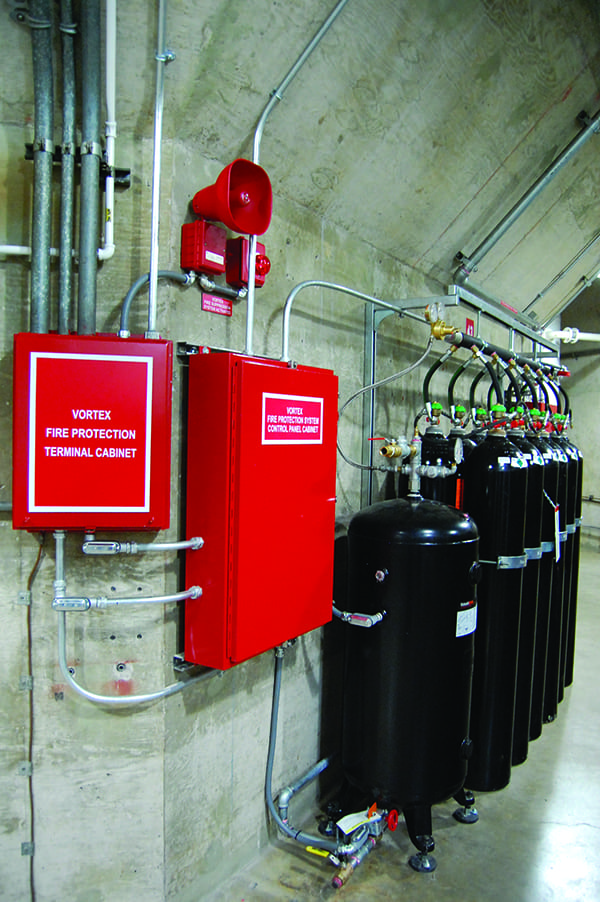 |
| 1. Firefighting 101. The hybrid fire suppression system uses stored nitrogen and a captive water supply to safely extinguish fires in protected spaces. Courtesy: Victaulic |
The basic system (Figure 1) consists of stored nitrogen, a captive water supply, and emitters installed in the hazard area. The amount of nitrogen required for this scalable system is defined by the elevation and enclosure volume of the area being protected. A twin-piping network of water and nitrogen supplies each emitter, which in turn delivers a suspension of the naturally occurring elements into the hazard area. It is fully compatible with automatic fire detection systems and is adaptable for remote manual activation.
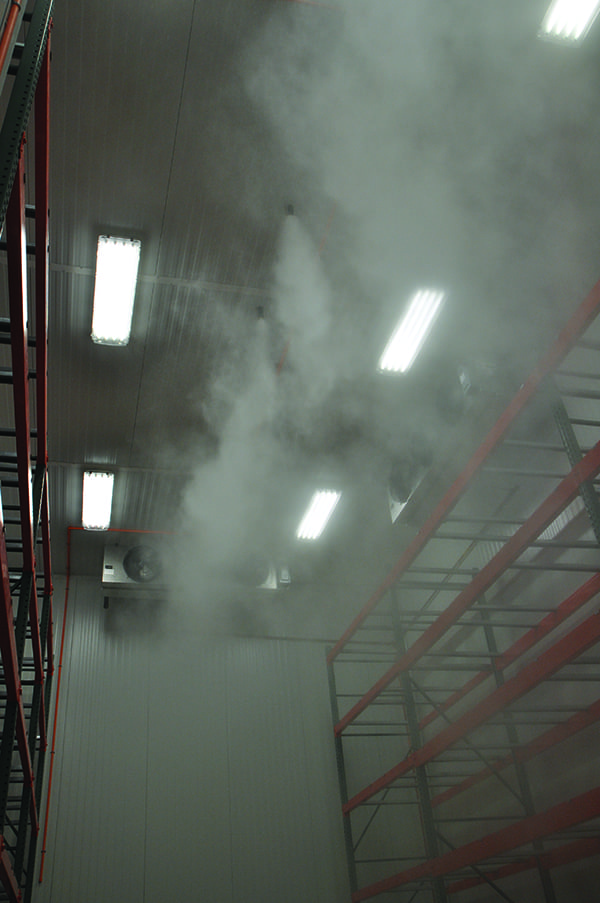 |
| 2. A cloud of benefits. The hybrid fire protection system discharges a cloud comprised of nitrogen and tiny water particles one-hundredth the size of a water mist droplet. Courtesy: Victaulic |
Hybrid fire protection systems have the capabilities of discharging a cloud of hybrid media into the protected space (Figure 2) thus extinguishing the fire without affecting the ozone and environment. The hybrid cloud, green technology, is comprised of both nitrogen and tiny water particles, one-hundredth the size of a water mist droplet. Two extinguishment mechanisms are occurring simultaneously: cooling and dilution of oxygen, resulting in an atmosphere that doesn’t support combustion. Atomizing a water droplet not only increases the surface area, it optimizes the efficiency for the droplet to absorb heat. The tiny particles of water and nitrogen are entrained in the air being consumed by the fire, thus extinguishing the fire at its core.
The hybrid fire suppression system is particularly advantageous in areas where an electrically non-conductive medium is necessary, where cleanup of residual chemicals would present inefficiencies, and in areas that must be free of toxins to maintain worker safety.
Because of its components, the system can be discharged as soon as smoke or fire is detected, unlike CO 2 systems that require personnel to be evacuated before system discharge. This means fires can be addressed more swiftly, and more importantly, it assures that workers exposed to the cloud are not adversely affected. There is almost no surface wetting because of the way the water and nitrogen are dispersed, so little cleanup is required.
Another attractive feature of this alternative system is that maintenance can be carried out without interruption to operations, and it introduces no safety risks for the facility or personnel.
Testing the System
Before introducing this new concept to industry, it was important to validate its efficacy. That step was taken with a working facility that was willing to install and test the functionality of the system.
The largest challenge for this older power plant was the need to replace a halon system. The building’s age was an obstacle because its construction made creating enclosure integrity next to impossible. The best solution would be one that did not rely on enclosure integrity.
Another requirement for the replacement system was its ability to function properly without interrupting operations. The halon system required extensive work any time there was a major outage because the turbines had to be removed and replaced, and the structure had to be restored to its prior level of integrity for the halon system to be effective. Unwilling to compromise safety, owners were repeatedly investing time and money to make the affected areas leak-proof.
Having tested CO2 systems unsuccessfully, the owners were looking for a better option. They reviewed the hybrid fire suppression system performance data that showed how the suspension of both water and nitrogen effectively extinguished fires. Though encouraged by these results, the owners still had reservations, having already dismissed water-based systems as being too expensive in terms of cleanup and restoration following system discharge.
Putting their reservations aside in light of test data results, the owners installed a hybrid fire suppression system. Pleased with both the reduced maintenance costs and the ameliorated impact on operations, the owners made the decision to install similar systems in additional plants.
Conquering Other Challenges
Realizing that substantiating the eco-friendly design of the system was just as important as demonstrating its performance, developers submitted the system for approval by the U.S. Environmental Protection Agency’s Significant New Alternatives Policy (SNAP) program. Part of the Clean Air Act, SNAP evaluates substitutes for ozone-depleting substances and determines if a new product meets its criteria. The results of this evaluation led to the hybrid fire suppression system being listed by SNAP as an acceptable replacement for Halon 1301 in total flooding applications.
A need for a superior method of fire safety has led to an innovative solution that not only addresses worker and facility safety, but also does so in a way that is environmentally responsible. In introducing this technology and validating it in a real-world application, developers have shown the willingness to question the status quo and tackle established system limitations. Successful deployment of this solution has proven its value in a particularly challenging area, and developers are optimistic about its ability to be deployed in a much broader range of industry applications. ■
—Mark Martella is Vortex sales manager with Victaulic Co.


